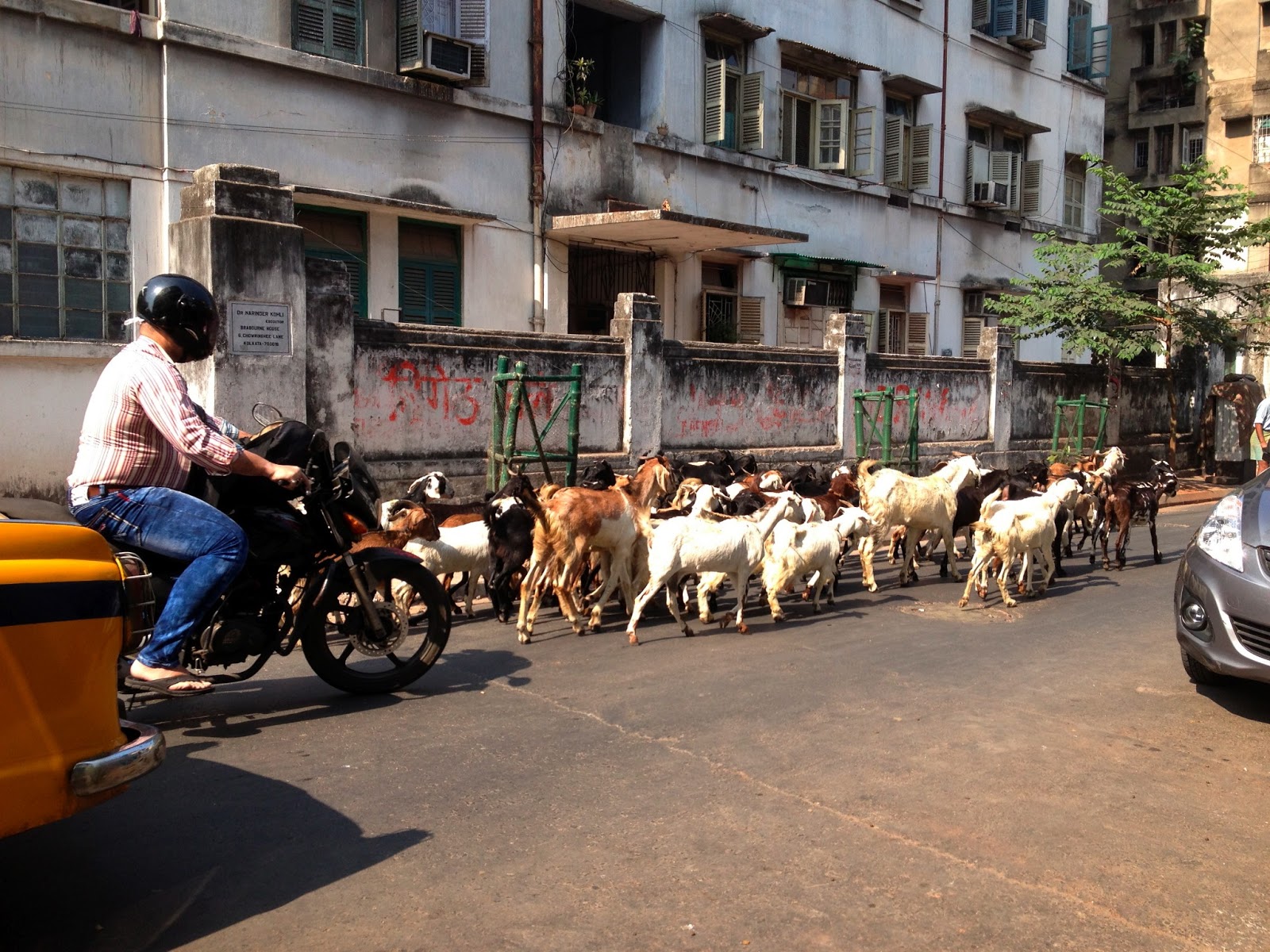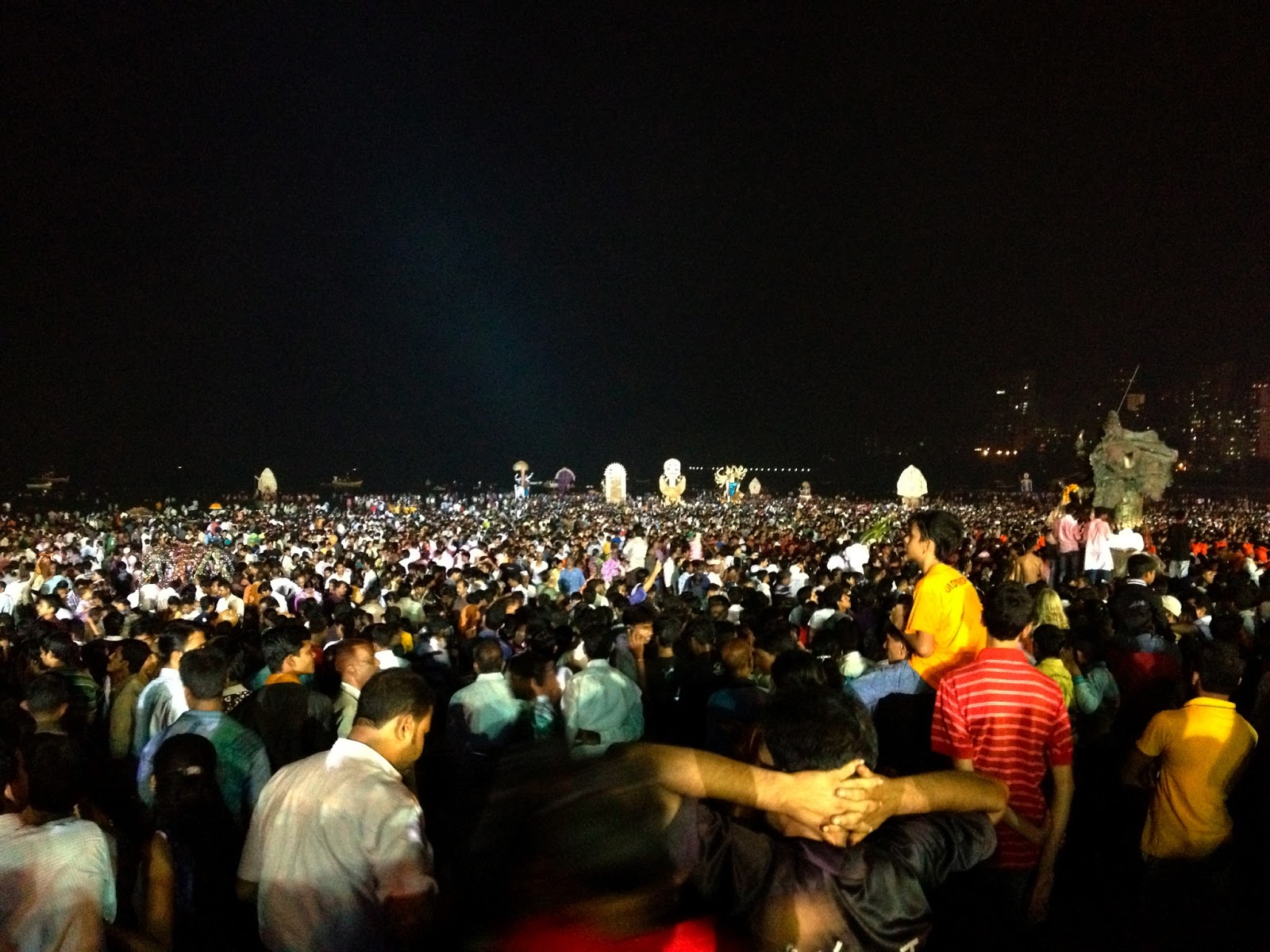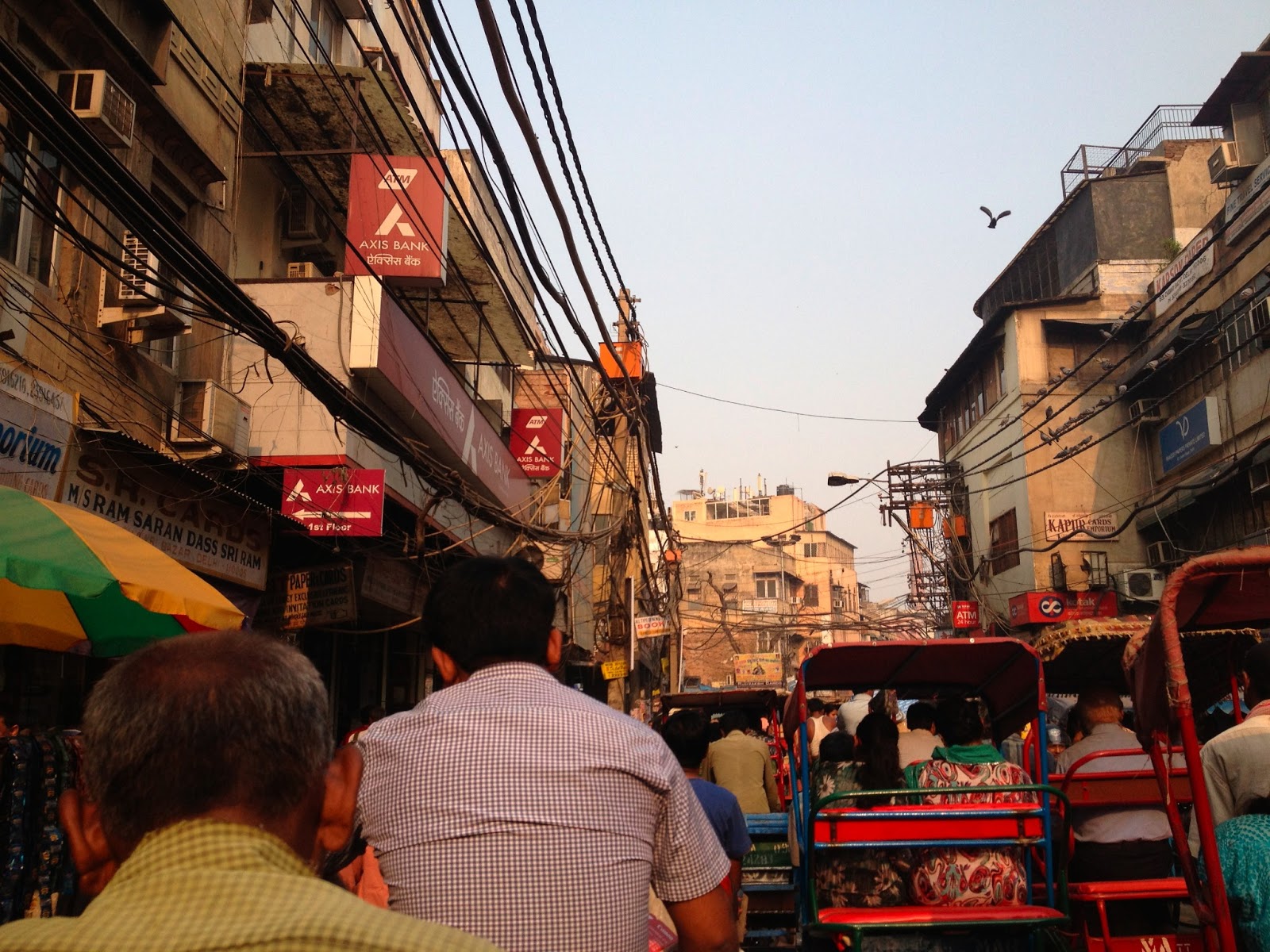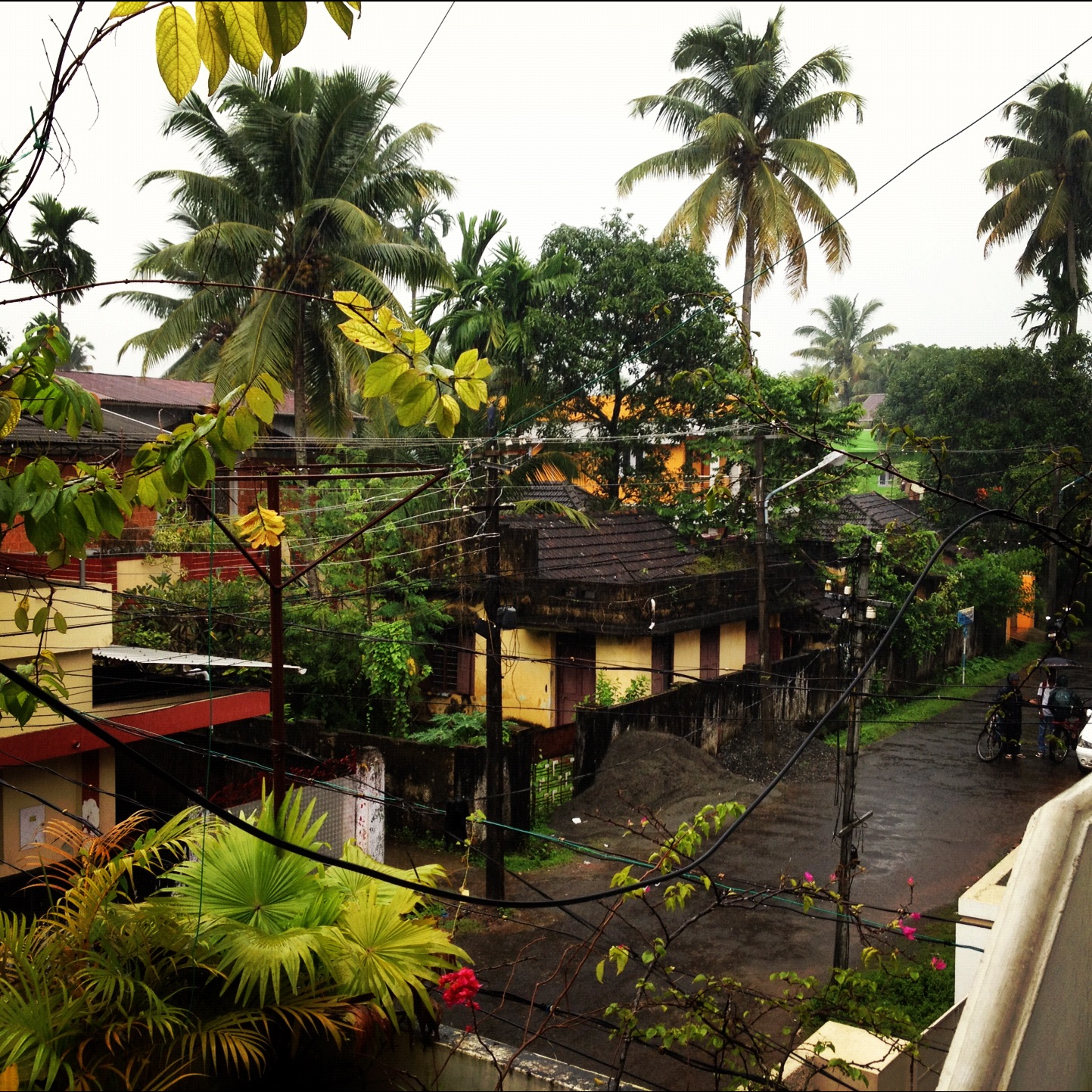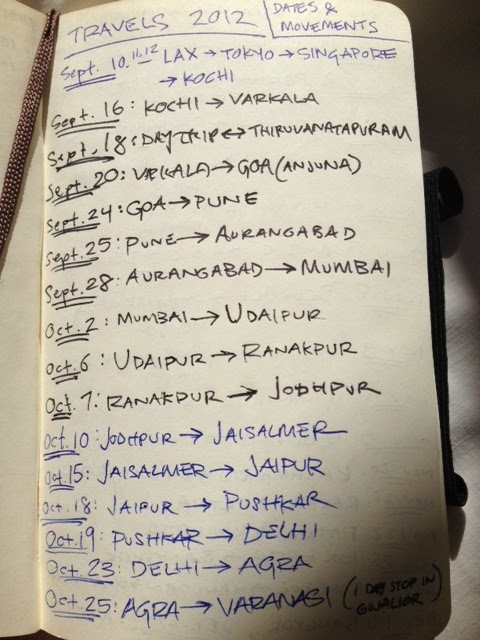For any traveler, and especially for an anthropology student, a trip to India is the ultimate challenge: to cope with, appreciate, and hopefully enjoy a country notorious for its overwhelming population, extreme poverty, exhausting bureaucracy, and the promise of foodborne illness. We go hoping that the multitude of fascinating cultural and historical experiences will overshadow the difficulties, and that whatever happens—good or bad—will ultimately lend itself to a positive overall experience.
However, one of the greatest challenges I faced throughout the trip and still face now is how to gauge my experience. Was it a positive experience? It was unquestionably educational and worthwhile as well as exciting and entertaining, but there was a void in the core of what I usually consider a positive experience abroad; I left feeling little personal connection to the place or the people. I didn’t expect to be treated as a local or to feel at home after a few weeks of traveling, but the sense of alienation was much stronger than I’d ever experienced abroad. So, did that make it a negative experience? No, partially because there was significant room for growth outside my comfort zone and without a safety net. Day to day interactions kept me on my toes and often had me fluctuating between great patience and necessary aggressiveness. Various levels of discomfort offered valuable perspective on the luxuries I am afforded back home, and even the slight discomforts I endured were dwarfed by the living conditions of so many impoverished Indians. Many adjectives could characterize this trip, so I won’t try to reduce it down to what it was or was not. Simply put, I am incredibly grateful to have had this experience, and the stories, sensory memories, and perspectives I gained will evoke both humor and deep thought throughout my life.
Sam and I both flew into Cochin, a relatively small city on the southwest coast. It didn’t strike us as the most significant decision at the time, but starting in the south and moving north factored into our experience greatly. While a majority of travelers are spit into Delhi without any time to adjust or develop important defense mechanisms, we had the rare opportunity to ease into the thick of it. The slower pace and smaller population of the tropical south made for a relaxing start, and travelers coming from the north prepared us with tales of sickness and scams, entertaining stories, and suggestions of where we should or shouldn’t go. Our itinerary developed as we went along, and with the goal of crossing into Nepal by the end of October we started moving up the west coast.
Rides & Rooms
The time we spent traveling by land and using public transportation offered great exposure to a major aspect of Indian life. Twenty-five million people use the Indian Railway daily (thanks, Wikipedia) and we frequently found ourselves in the railway world, whether waiting in ‘lines’ (i.e. sweaty, surging clumps of Indian men) for apparently unavailable train tickets, or meeting friendly university students in our train compartment. We spent many nights sleeping on those blue plastic berths, and even had our thanksgiving meal on the train from Patna to Kolkata. While the majority of our train rides were in the non-a/c sleeper class (a seat in the day, a sleeping berth at night), we had one humbling ride in the general compartment. It’s incredible how many people have to travel in these conditions. The general cars are literally packed to the brim—once you get on the train (and this is a battle in itself), you’re only entitled to the space your own body takes up. No one checks tickets because it’s just not possible to move throughout the car. Millions of people endure these rides daily, and some for ten, twenty, or thirty hours when traveling long distances. However, for those of us fortunate enough to upgrade, train rides were generally enjoyable opportunities to watch the Indian landscape go by, read, relax, and meet locals. The railway caterers make a damn good chicken Biriyani too.
When we weren’t taking trains, we hopped on local buses. The central bus stations of most Indian cities have buses going everywhere, all the time. We would often show up at the bus station with no ticket, and within half an hour be en route to our next destination, usually between four and ten hours away (frequent stops and the occasional flat tire didn’t help the cause). There was always an element of surprise when boarding a local bus, never knowing how well the road ahead was paved, if the bus had any suspension system, and if the driver was fond of using his horn or not. We experienced every combination of these factors, and I’m sure it’s not difficult to imagine the correlating levels of comfort. We were often the only foreigners on these buses, intriguing locals and sparking a number of conversations, though few made it over the language barrier.
Modes of daily transportation varied from place to place, but the auto-rickshaw reigns supreme in most of India. Every rickshaw ride starts with a bargain for the price, and at times we found ourselves in the midst of a rickshaw cartel, with drivers shouting to each other not to go below a certain price. Fortunately, we could usually find an honest driver to take us for a modestly inflated tourist price rather than an outrageous oblivious idiot price. You may laugh when I admit we were usually arguing between, say, one and four dollars for a ride, but it was really a deep matter of principle. It feels so much better paying the guy who doesn’t treat you like an idiot. On several occasions we found a good price and hopped in the rickshaw, soon to find out that our driver had no idea where he was going. We would always settle on a fixed price before the ride, so this wasn’t a matter of running the meter or taking us somewhere on commission. While it was somewhat irritating, considering the drivers always ‘confirmed’ the destination with a good head-wobble (to be discussed later), these rides often led us through some fascinating areas we would have missed otherwise. Old Delhi and Varanasi prominently featured the bike-rickshaw, and Raxaul introduced us to our first mule-driven rickshaw. Mumbai and Kolkata offered the service of car taxis, a real treat for the buttocks. Ranakpur seemingly lacked any type of taxi or rickshaw, so we hunkered down and walked the two kilometers to and from the nearest guesthouse (great monkey and cow photo opportunities included).
Spending between six and twenty dollars a night for a double room, we experienced a broad range of sleeping situations. Price and quality were not always correlated. Touristy areas had a wide selection of accommodations, and we could confidently arrive with no reservations and find a comfortable budget spot without much trouble. These hotels or guesthouses commonly had a restaurant where we met and swapped stories with other travelers over westernized Indian food and some Kingfisher beer. Every now and then we’d get a room with a musty smell, or smaller creatures holding residence, or a final destination-esque fan attempting to shake itself free from the ceiling. With our standards sufficiently lowered, trivial faults were easily overshadowed by such luxuries as television and wi-fi. The one available English-language channel’s daily lineup consisted of The Simpsons, Two and a Half Men, How I Met Your Mother, and MasterChef All-Stars Australia. It cycled through approximately ten commercials, all of which we quickly knew by heart and referenced frequently. On the weekends they would feature cinematic classics such as Never Back Down and Ghostrider. I digress. While finding accommodation was never a problem on the tourist track, we were surprised by a difficulty that arose in a couple places without tourist infrastructure. I can’t be sure whether the discrimination was based on race or our backpacker appearance, but we were rudely turned away from six or seven hotels in both Aurangabad and Patna on the basis of ‘no vacancy’ when all signs suggested otherwise. In almost every other location we had been greeted upon arrival by hotel touts eager to make a commission, yet here we found downright rejection of good business (trust me, there were rooms). We eventually found rooms on both occasions, but that relief didn’t ease our curiosity about this bizarre trend.
Festivals
I couldn’t help laughing as a rickshaw driver in Jodhpur attempted to drive us to our guesthouse through an endless parade of people covered in vibrant powder, dancing, singing, and waving at us in our motionless chariot. To revere the millions of Hindu deities Indians have plenty of reason to celebrate, and they do so in no subtle manner; we quickly became accustomed to the sounds of fireworks, explosions, and pickup trucks blaring music through blown-out speakers. Throughout our time in India we would frequently stumble upon processions, performances, and gatherings, adding yet another layer of vitality to a country already saturated with life. Our arrival in Mumbai coincided with final day of the Ganesh Chaturthi (Lord Ganesh’s birthday), a huge festival that concludes with immersion of Ganesh statues into water. We joined millions on Mumbai’s Chowpatty beach, watching enormous statues roll slowly into the ocean and walking through a sea of families performing family rituals and submerging their own smaller statues in water. The sheer volume of the gathering amazed me, but I was more impressed by the inclusivity of the gathering. It reminded me of my feeling during Songkran celebrations in Thailand—people of all ages participating in (i.e. present and active, not just watching) a public cultural event just doesn’t happen in the States. The initially novel feeling of being one among millions eventually became overwhelming and we ventured away, watching the surreal scene shrink into the distance.
The Day to Day
When asked about my travels, the most common question I receive is “So, I know everyone probably asks you this, but what were the highlights/where was your favorite place?” Whether explicitly or implicitly, the question is usually posed in terms of places I went or things I did, giving plenty to talk about but leaving little space for another incredibly important aspect of my trip. In truth, the real spark behind my love of travel is the multitude of cultural quirks and ubiquities that pop up to confuse, entertain, and sometimes irritate you, essentially filling in the cracks between ‘highlights.’ While incredible sites add an impressive cherry to the top of my Indian sundae, this shit’s the banana split:
The Head Wobble
The head wobble (not up-down or left-right but side-side like a bobble-head toy) is a confusing, entertaining, exasperating, and extremely popular expression of body language that I was never able to fully grasp. The south of India has a looser, lengthier wobble, while the north has a more abrupt bob to one side. Some of the meanings I gathered were:
I’m listening; yes; no; maybe; I know; I don’t know; I don’t know but I want you to think I do know; I know but I want you to think I don’t know; I agree; thank you; you’re welcome; and Mmm, tasty!
It is often accompanied by a subtle smile without smiling eyes, a distant look that only makes it more difficult to understand. Towards the end of the trip I found myself using it occasionally for “yes,” “I agree,” and “Mmm, tasty!”
Mustaches
Here at home, fully mustachioed men are rather scarce. Maybe less so during the months of November and March, but that’s a temporary gimmick. The men of India, however, have embraced the lip sweater as a year-round fashion staple, and they wear them with great dignity. Small barbershops scattered along the streets of provide men with superior grooming treatment, keeping mustaches full and tidy against baby-smooth chins and cheeks. Simple, elegant, irony-free Ron Swanson-caliber mustaches everywhere.
Pan Masala
One of the many variations of Areca/Betel nut consumption in Asia, Pan Masala is a small packet of crushed Areca nut combined with other spices and flavors. The enormity of its popularity among both men and women blows my mind. Users like to pour the little packet into their hand, mix it around with their thumb, clap it, pack it, mix it, clap it, pack it (this goes on for about fifteen minutes), and finally chew it. Streets and hotel room walls often look like they’ve been spattered with blood, resulting from the surplus of red saliva that stains everything in its path, from the chewer’s teeth and gums, to the surface on which it is inevitably spit (not much discretion there, clearly).
Photo shoots
As a tourist in India, you can quickly become the attraction. We had photo shoots on the beach, photo shoots at temples, and photo shoots we didn’t know about until they were already well underway. It wasn’t a daily occurrence, but when were spending time with other female travelers it was always to be expected. As we walked around the Ellora cave temple complex with our friend Dominica, we were stopped about twenty times to take photos with Indian tourists—she said that was normal for her.
Chai wallas (vendors)
In India, tea drinking is not reserved for a particular time or place; it is reserved for every time and place. Patrolling train platforms and train carriages, walking down the sidewalk, or lingering with posses of rickshaw drivers, Chai wallas keep the population warm and caffeinated with their seemingly bottomless teapots or thermoses of tea and a stack of miniature plastic cups. Their characteristically nasal, throaty calls of “Chaaaaaaai! Ch-ch-ch-chaiiiiiiii” bring in customers with ease, because who can resist a delicious little fix of chai for only five Rupees?
Honking
In countries without traffic laws (or where traffic laws are not regarded), the horn becomes an important form of communication between drivers. Of course, Indian drivers take it to the next level; the horn is the rule, not the exception. Trucks and buses, which I might add are all beautifully decorated by hand, all have the words “Horn Please” painted on the back. Some horns play custom melodic ditties, while many others resemble the sound of animal slaughter. Now factor in overpopulation, heavy traffic, and minimal organization, and appreciate the lack of honking in your life.
Goats and Cows
Walking through the streets of Jodhpur one evening, we saw a cow vigorously itching her eyeball on the brake handle of a motorbike. We saw goats with fabulous hairstyles and the droopiest of udders. On a daily basis we found ourselves in traffic jams consisting not only of automobiles, but also herds of cattle and livestock. The ubiquity of these calm, moseying creatures serves as much-needed comic relief in the overwhelming hustle and bustle of Indian cities. The humped Indian cattle bask in their sacred glory, dewlaps swaying as they walk, and passersby massaging their fatty humps for good luck.
Train Boarding
Remember the opening scene of The Darjeeling Limited, with Bill Murray and Adrien Brody sprinting to catch the train? Bill doesn’t make it, but Adrien gets on in the knick of time, and he looks pretty cool doing it. Well, Indian guys do that all the time, but not because they’re late. As the train sits at the platform, passengers mill around talking and drinking tea, waiting for the train to start moving. When it picks up a little a bit of speed and seems like it might…just…get...away, a bunch of guys run along, hoist themselves up into the car, hang onto the side with one leg in and one leg out, and survey their adoring audience while the train chugs out of the station. If I hadn’t always been carrying those damn backpacks I would’ve done it every time.
In Closing
The list goes on, but I’ll stop here for now. My goal in this piece was to convey a sense of our daily life, touching on experiences that are more or less unique to India. For this reason I avoided writing on the international phenomena of scams, touts, and rip-offs despite their pervasiveness in India. I purposely didn’t cover big themes such as religion, corruption, poverty, the caste system, and sexism because I don’t consider myself a qualified source of information on these topics, and a full analysis of each would deserve pages of writing. However, these themes were consistently present throughout the trip, and should be included in any comprehensive discussion of Indian society.
I’ve enjoyed sharing my experience a little more in depth, and I hope it’s been interesting and entertaining for you too. Thanks for reading!

